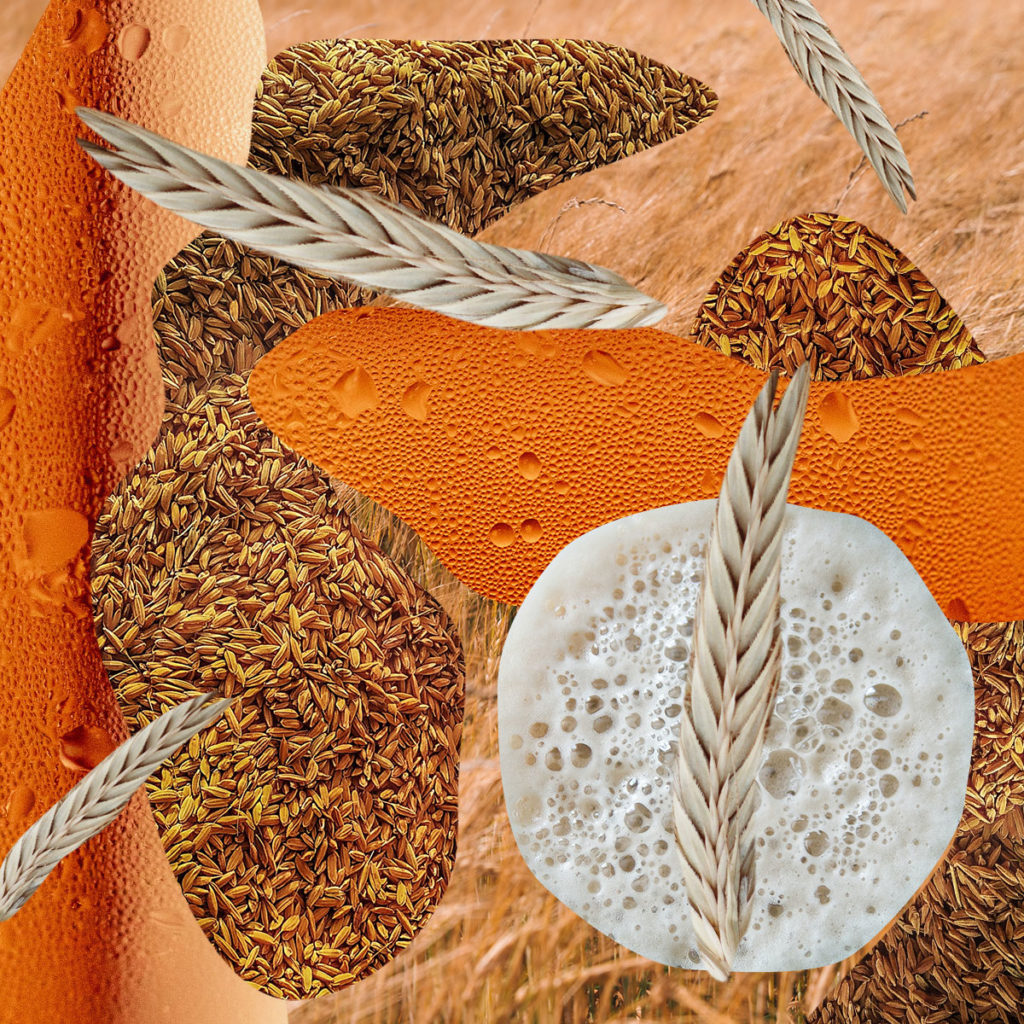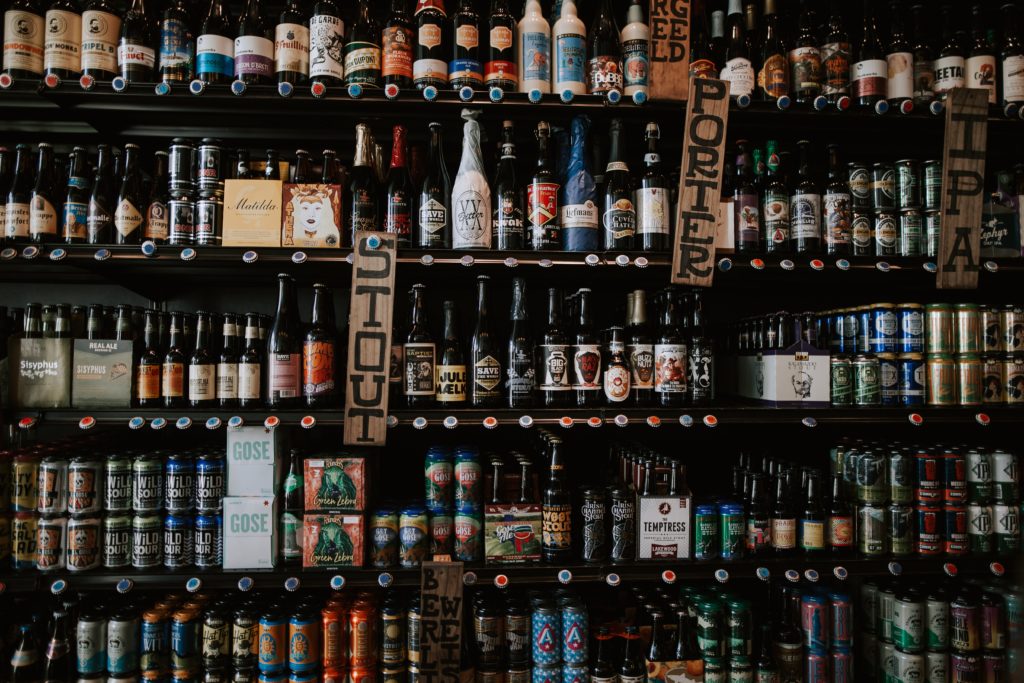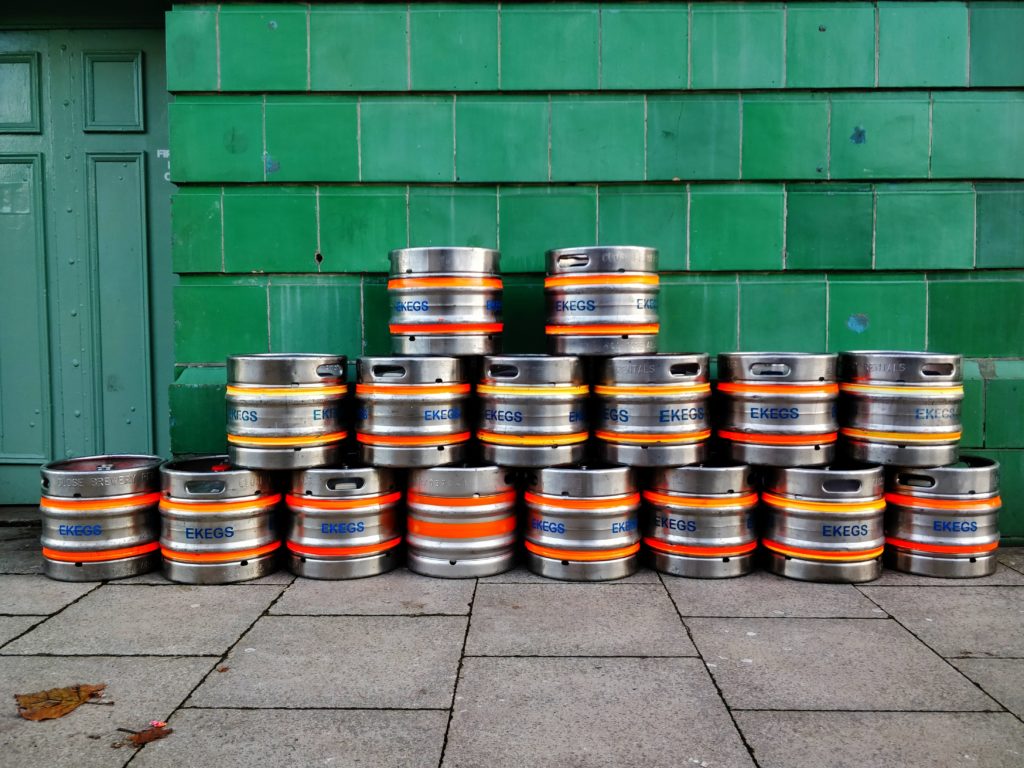
Enough Convoluted Supply Chains
It wasn’t so very long ago that the beer aisle at an H-E-B supermarket in Texas looked the same as the beer aisle in a Hannaford supermarket in Vermont. But in the last decade, craft beer has exploded—in 2010 there were 1,800 breweries in the U.S.; in 2019 there were over 8,000. Rather than choosing between Budweiser and Miller, locally-minded consumers can now opt for small-batch beers made by independent brewers in their region, their state, or often their city. But how many of those local beers are actually local?
In 2009, Andrea Stanley was working as a counselor for people who had been injured on the job and dabbling in homebrewing with her husband, Christian, at their home in Massachusetts. Stanley was interested in local food systems—gardening and canning and reading lots of Michael Pollan. On vacation in Maine, she visited a microbrewery and, while sipping her craft beer, recalled an article she had recently read about bakeries that were using wheat from local farms. “I thought, ‘Wait! Beer is made from grains and where…do those grains come from?’” Stanley recalls.
The answer, she found, was Europe—England or Germany or Belgium. “Cargill came up a lot,” says Stanley of the behemoth food conglomerate with a checkered record on child labor and the environment. The largest privately held company in America, Cargill owned sixteen malthouses in nine countries until last year, when it sold its malt business to the French corporation Axéréal. Stanley didn’t understand why New England breweries were buying their grain from Europe.
“At the time, the Northeast was at the beginning of a grain renaissance thanks to organizations like GrowNYC Grains, the Maine Grains Alliance, and Vermont’s Northern Grain Growers Association that nurtured local grain supply chains—from the farmers planting heirloom wheat, rye, and corn to the millers processing the grain to the bakers selling truly local loaves at the farmers market. But brewers were left out of that supply chain because of a crucial missing link—maltsters.”
“I had no idea what malting was,” says Stanley. “So, you know, I googled it. And that was the start of it.”

All beer starts with grain, but before that grain can be fermented, it must be malted. Yeast turns sugar into alcohol and carbon dioxide, and malting unlocks the sugars contained in grain. During malting, barley—or wheat, rice, or any other type of grain—is soaked in water, where it begins to sprout. Each grain of barley is a seed, and as the seeds hydrate, they prepare to grow by breaking down their complex starches into sugars. After a couple days of steeping in water, the seeds are spread out on the malt house floor and aerated to continue germinating for several more days. At that point, the process is halted by drying the sprouted seeds in a kiln. The resulting malt is what brewers buy to make their beer.
In 2010, when the Stanleys opened Valley Malt in Western Massachusetts, the closest malt house was in Wisconsin. So even if a brewer in the Northeast wanted to experiment with local grains, there was no way to convert it into malt.
“As a young brewer, I found it disheartening, even inauthentic to call our beer ‘local’ when the only local things about it were the water and the label,” says Matthew Steinberg of Exhibit ‘A’ Brewing in Framingham, Massachusetts. “My grain was from England, my hops were from Washington, and aside from maybe some lavender or heather tips that I could throw into my beer, there weren’t any local ingredients available to me. So when Andrea and Chris told me about their plan to build a malt house I was like, ‘I’m so into this!’”
“Stanley first had to convince local farmers to grow the grains she needed. “When we started, farmers weren’t planting with brewers in mind because there was no market,” she says. “If they were growing grains, it was often for animal feed. So we went to all the ag conferences and tried to talk farmers into growing barley, promising them that we would buy it no matter what.””
While Stanley waited for the barley crop to come in, she bought and malted whatever grains she could get her hands on—wheat, rye grown as a cover crop. “In the early years,” she recollects, “I had all these conversations with brewers where they’d be so excited to make a 100-percent local beer made with malted barley, and I’d have to be, like, ‘Very cool! But instead, how about you buy this local malted wheat and put a little bit of it in all your beers?’”

The Stanleys kept their jobs, hedging in case it turned out brewers had no need for locally malted grain. But quickly, demand for the Stanleys’ malt outstripped their production capacity. Within two years of opening, Valley Malt upgraded its equipment to increase the amount of malt it could process, expanding from one ton to four tons per week. They quit their day jobs and hired an employee. Still, brewers would buy more malt from the Stanleys if they could. Currently, Exhibit ‘A’ sources 20 to 25 percent of its grain from Valley Malt, and Steinberg hopes to grow that number as the Stanleys expand. For him, the benefits of working with a neighbor—Valley Malt is 70 miles away—go beyond a commitment to the local. Stanley works closely with Steinberg to produce malt to his individual specifications, even malting sunflower seeds and chickpeas for experimental beers.
“Plus,” says Steinberg, “from a quality standpoint, fresh malt just makes for a better beer. I bought a bag of roasted malt from England for a porter I was making, and it was, like, a year old. My supplier said, ‘Yeah, man, that’s just how it is.’ Well that’s no good for me. Working with Valley Malt—it’s farm-to-glass.”




